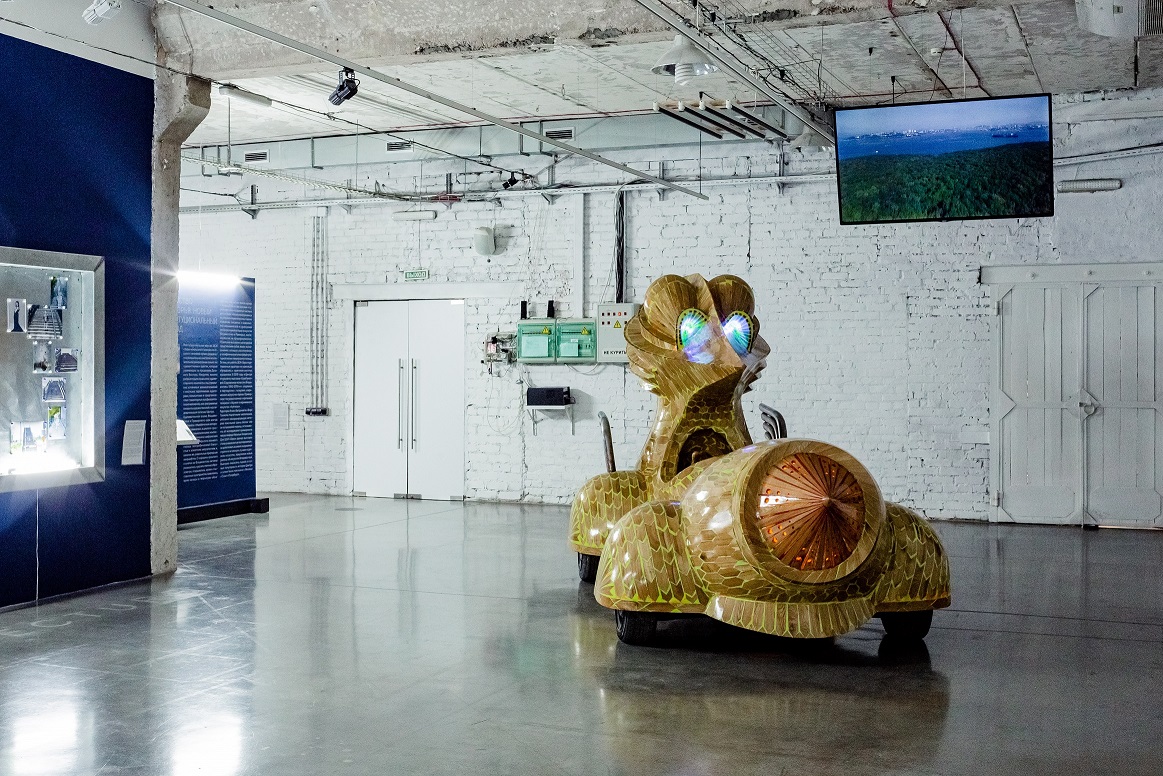
FROM 14 NOVEMBER 2020 / SMALL EXHIBITION HALL
The Zarya Center for Contemporary Art opened the retrospective exhibition, “Dream of the Dawn,” which covered the seven-year history of the center, whose name echoes the Russian word for “dawn.” The exhibition revisits some of the most significant projects realized over the center’s operation, rounded out with a selection of archival materials and interviews with artists, curators and researchers.
As Zarya CCA’s chief curator Alisa Bagdonayte observes, “Like many other art institutions, Zarya Center for Contemporary Art has become a place where one could find projects distinguished by their acute relevance and the vibrant expressions of their authors. Each project was realized not just as a complete presentation of a selection of artifacts or practices, but also in the form of a discursive space, where expert knowledge encountered a mix of audience reactions, forming a polyphony of ideas and opinions.”
Among the participants of these exhibitions one will find both well-known Russian and international artists – including Gosha Ostretsov, Sasha Kurmaz, Leif Holmstrand – and local luminaries like Ilyas Zinatulin, Kirill Kryuchkov and Andrey Dmitrenko.
In addition to the major exhibitions, “Dream of the Dawn” revisits the film screenings, lecture cycles and performances – all of which helped introduce guests of Zarya CCA to the multifaceted world of contemporary culture and humanitarian thinking.
Another important aspect within the exhibition is the collaboration between Zarya CCA and Vladivostok, the city in which it is located. A section of the show will be dedicated to the experience of artists who chose to integrate their works deep within the city – among them, Pasha183’s “wings,” which were hung at bus stations, Slava PTRK’s graffiti on street steps, and the miniature highrises created by German artist Evol – and what happened to those works.
As exhibition curator Andrey Vasilenko observes, “The emergence of new cultural institutions can always act as a trigger, setting off a chain reaction of processes that can transform the usual symbolic order and in turn lead to new connections between people and communities. And while the dialogue between Zarya CCA and Vladivostok did not always go smoothly, in the end, Zarya managed to integrate itself into the cultural life of the city, collaborating with many exhibition venues, museums and research institutions.”
One of the key elements of the artistic and research policies of Zarya CCA was its focus on the representation of the local artistic context and the development of relationships with local artists, curators, musicians and professionals from the sphere of the humanities. With its original curatorial interpretation, the exhibition, ““Rebels at the Edge: The Contemporary Art of Vladivostok, 1960s-2010s,” presented as part of “Dream of the Dawn,” gave Zarya a chance to craft a detailed panorama of the local scenes over a period of more than half of a century.
In a section of “Dream of the Dawn” surveying the portrait of the region generated through Zarya’s activities, visitors will encounter the collection of works created by participants in the center’s residency program, which have been presented at Zarya over the past few years. In particular, the exhibition “IN RESIDENCE,” sought to articulate the connections between the creative approaches of the residents in their research of the region, which together combined to offer a new “portrait of the place.”
The only artist residency program in the Far East, Zarya’s artists-in-residence program, which launched in 2014, has hosted artists from 21 countries and realized more than 90 projects reflecting on the local geopolitical, social and cultural landscapes. In their works, these artists paid special attention to the local context – the myths of the distant land, the particularities of the social and cultural life, and a multifaceted collaboration between local communities.